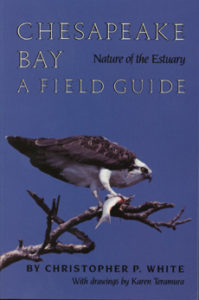Chesapeake Bay: Nature of the Estuary
Excerpt
 H.L. Mencken once called the Chesapeake an “immense protein factory.” Yet, it is not simply the size of the basin that makes its bounty great. Many other coastal regions outrank the Bay in size. So what makes the Chesapeake so special? Why does this brackish basin outproduce other coastal areas?
H.L. Mencken once called the Chesapeake an “immense protein factory.” Yet, it is not simply the size of the basin that makes its bounty great. Many other coastal regions outrank the Bay in size. So what makes the Chesapeake so special? Why does this brackish basin outproduce other coastal areas?
An explanation of the Bay’s remarkable productivity can be found in the chemistry and mechanics of the Atlantic Coast estuary. An estuary is a semi-enclosed coastal body of water that has a measurable salinity gradient from its freshwater drainage to its ocean entrance….
The Chesapeake qualifies as an estuary, as do Delaware Bay to the north and Pamlico Sound to the south. So do Cook Inlet in Alaska and Puget Sound, the port of Seattle.

Thousands of estuaries are located worldwide. Most spectacular are Trondheimsfjord and Oslofjord in Norway, their steep granite walls and deep blue water echoing back to the last ice age. In Nova Scotia, the ice-carved Minas Basin off the Bay of Fundy is known for its record tides. Even along the Newfoundland coast, estuarine systems as rugged and splendid as the Gray River wander through majestic 1,200-foot valleys where the northern ice sheet once roamed.
The beauty of the Chesapeake is more subtle. Its shores are modest, its tides reserved. Its history is bound in sand and clay and water, not granite and ice. In its moderation is found the key to its teeming productivity.
Differing from the glacier-cut fjords of Norway, Canada, and the Pacific Northwest, mid-Atlantic estuaries like the Chesapeake are less dramatic, more finely sloped, and shallower. This very shallowness allows sunlight to nurture rooted aquatic plants. The gentle slopes give marshlands a foothold along the shore. In turn, this plant life provides oxygen, detritus, and habitat for aquatic species….
Across the board, one finds relatively few species of plants and animals that can persist in this rigorous environment, but those that can survive usually flourish here in greater abundance than anywhere else on earth…. Historically, the Chesapeake has been the greatest shell- and finfish bay in North America. Second to none…
